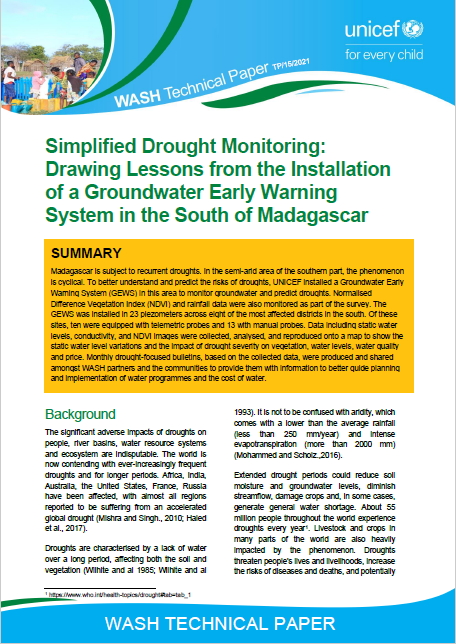Simplified Drought Monitoring : Drawing Lessons from the Installation of a Groundwater Early Warning System in the South of Madagascar
 |
note Apr 2021 ; 20 pages
Ed. UNICEF - Antananarivo
Téléchargeable sous format: PdF
Téléchargeable chez l'éditeur
Abstract:
Madagascar is subject to recurrent droughts. In the semi-arid area of the southern part, the phenomenon is cyclical. To better understand and predict the risks of droughts, UNICEF installed a Groundwater Early Warning System (GEWS) in this area to monitor groundwater and predict droughts. Normalised Difference Vegetation Index (NDVI) and rainfall data were also monitored as part of the survey. The GEWS was installed in 23 piezometers across eight of the most affected districts in the south. Of these sites, ten were equipped with telemetric probes and 13 with manual probes. Data including static water levels, conductivity, and NDVI images were collected, analysed, and reproduced onto a map to show the static water level variations and the impact of drought severity on vegetation, water levels, water quality and price. Monthly drought-focused bulletins, based on the collected data, were produced and shared amongst WASH partners and the communities to provide them with information to better guide planning and implementation of water programmes and the cost of water.
Mots clefs: |
accès à l'eau (CI) (DT) (OP) (ope) , sécheresse (CI) (DT) (OP) (ope) |
Pays concerné: |
Editeur/Diffuseur: |
|
UNICEF
-
Fonds des Nations Unies pour l'Enfance - Antananarivo - Madagascar |
En cas de lien brisé, nous le mentionner à communication@pseau.org